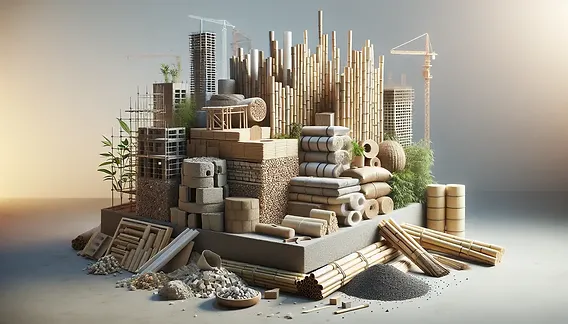In recent years, prefabricated houses have emerged as a revolutionary concept in the housing industry. With the demand for sustainable, cost-effective, and efficient housing solutions on the rise, fabricated homes are now more popular than ever. These homes are designed and manufactured in factories, then transported to the desired location for assembly. This approach significantly reduces construction time, minimizes waste, and offers an eco-friendly alternative to traditional homes.
What is a Prefabricated House?
A prefabricated house is a residential structure that is built in sections or modules in a factory setting. These sections are then transported to the final site, where they are assembled. Unlike conventional homes that require lengthy on-site construction, fabricated homes are built in a controlled environment, ensuring high-quality standards and efficient production processes.
The concept of prefabrication is not new, but technological advancements have made it a viable and attractive option for modern homeowners. From modular homes to panelized and manufactured houses, the variety of prefabricated housing options caters to different needs and preferences.
Types of Prefabricated Houses
Modular Homes: Built in modules or sections in a factory and then assembled on-site.
Panelized Homes: Constructed with pre-made wall panels that are assembled at the location.
Manufactured Homes: Completely built in a factory and transported to the site in one piece.
Container Homes: Repurposed shipping containers converted into stylish, sustainable housing.
Advantages of Prefabricated Houses
1. Cost-Effective
One of the most significant advantages of fabricated homes is their cost efficiency. Since the construction takes place in a factory, bulk purchasing of materials reduces costs. Additionally, labor expenses are minimized due to the streamlined production process.
2. Faster Construction Time
Traditional homes take several months or even years to complete. However, prefabricated houses can be assembled in weeks, significantly reducing waiting periods for homeowners.
3. Eco-Friendly Construction
Building a prefabricated house generates less waste compared to conventional construction. The controlled factory environment ensures optimal material usage, reducing excess and promoting sustainability.
4. High-Quality Standards
Since fabricated homes are built in a controlled setting, they adhere to strict quality standards. The use of advanced technology and automated machinery ensures precision and consistency in construction.
5. Customization Options
Contrary to the misconception that prefabricated houses lack customization, homeowners can personalize their designs. From floor plans to interior finishes, these homes offer flexibility and creativity.
6. Energy Efficiency
Many prefabricated homes incorporate energy-efficient materials and technologies. Features such as solar panels, energy-efficient windows, and proper insulation contribute to lower energy consumption and reduced utility bills.
Challenges of Prefabricated Houses
While fabricated homes offer numerous benefits, they also come with certain challenges:
Limited Financing Options: Some financial institutions may be hesitant to offer loans for prefabricated homes due to their unconventional nature.
Land and Zoning Restrictions: Depending on the location, zoning laws and building codes may impose restrictions on prefabricated houses.
Transportation Costs: While construction costs are lower, transporting the prefabricated sections can add to the expenses.
The Growing Popularity of Prefabricated Houses
The global demand for fabricated homes is on the rise. As urbanization and population growth continue, many people are seeking affordable and efficient housing solutions. Countries like the United States, Japan, and Germany are leading the way in prefabricated housing innovations, offering high-quality designs and sustainable solutions.
Additionally, the COVID-19 pandemic has accelerated the need for quick housing solutions, making prefabricated houses a preferred choice for emergency shelters, remote workspaces, and vacation homes.
Prefabricated Houses vs. Traditional Homes
Feature
Prefabricated Houses
Traditional Homes
Construction Time
Weeks to a few months
Several months to years
Cost
Generally lower
Higher due to labor and materials
Quality Control
Factory-controlled
On-site variations
Environmental Impact
Low waste, eco-friendly
Higher waste, more environmental impact
Customization
High
High but more expensive
Future of Prefabricated Houses
The future of prefabricated houses looks promising, with advancements in technology driving innovation in the industry. Some of the key trends include:
Smart Homes Integration: Automation and IoT (Internet of Things) are enhancing the functionality of fabricated homes.
Sustainable Materials: The use of recycled and biodegradable materials is making prefabricated homes more environmentally friendly.
3D-Printed Homes: The emergence of 3D printing technology is revolutionizing the way prefabricated houses are built, further reducing costs and construction time.
Conclusion
As the demand for affordable, sustainable, and high-quality housing continues to grow, prefabricated houses are becoming a mainstream solution. With their cost-effective nature, rapid construction, and environmental benefits, fabricated homes offer a viable alternative to traditional housing. Although challenges exist, ongoing innovations and increased awareness are making prefabricated housing the future of modern living.
Investing in a prefabricated house not only provides financial and environmental benefits but also ensures a faster and more efficient home-building experience. As technology continues to evolve, the potential for fabricated homes will only expand, making them an ideal choice for homeowners looking for quality, affordability, and sustainability.



